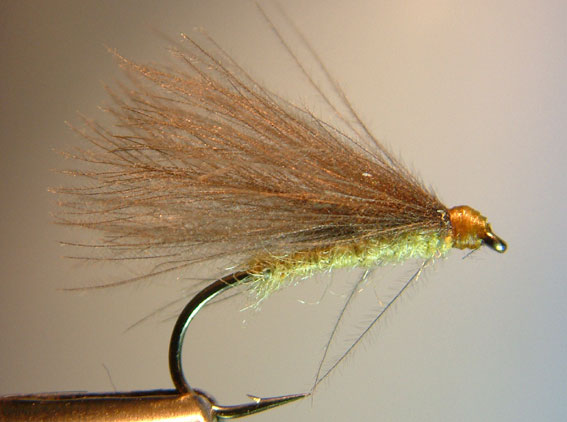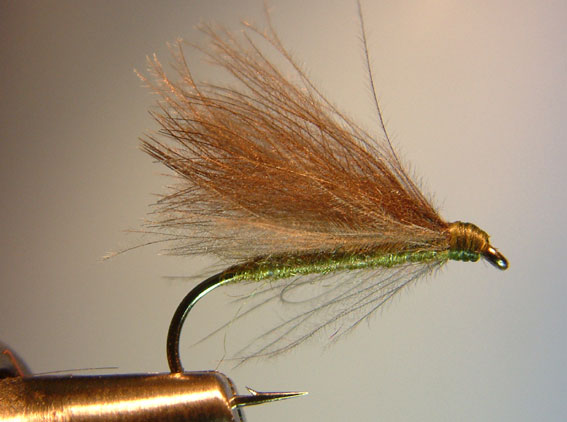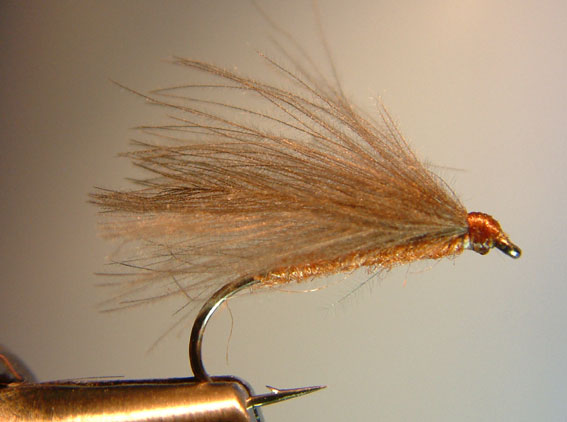
F Fly Selection
All the F Fly patterns below have been tied and photographed by Alun Rees.
There are plenty of them for you to play with. The F Fly is one of the simplest patterns to tie and is very successful for both grayling and trout. Thanks to Alun for his continued support and hard work for the Society.
Grey F Fly
- Hooks: Lightweight down-eye dry fly, 10, 12, 14, 16, 18
- Body: Grey tying silk or polypropylene dubbing
- Wing: A couple of CDC feathers.
- Head: Tying silk the same colour as the body and clear varnish
- Notes
- When tying this fly, aim to keep the body slim. You could also try adding a couple of tail whisks to imitate the various upwing flies that hatch. Match the body colour to the type of fly that’s hatching.
- When it comes to the wing, consider keeping this as light as possible. Of course, for heavier or rougher water, use a few more CDC feathers.
Beige F Fly
- Hooks: Lightweight down-eye dry fly, 10, 12, 14, 16, 18
- Body: Beige tying silk or polypropylene dubbing
- Wing: A couple of CDC feathers.
- Head: Tying silk the same colour as the body and clear varnish
- Notes
- When tying this fly, aim to keep the body slim. You could also try adding a couple of tail whisks to imitate the various upwing flies that hatch. Match the body colour to the type of fly that’s hatching.
- When it comes to the wing, consider keeping this as light as possible. Of course, for heavier or rougher water, use a few more CDC feathers.
Black F Fly
- Hooks: Lightweight down-eye dry fly, 10, 12, 14, 16, 18
- Body: Black tying silk or polypropylene dubbing
- Wing: A couple of CDC feathers.
- Head: Tying silk the same colour as the body and clear varnish
- Notes
- When tying this fly, aim to keep the body slim. You could also try adding a couple of tail whisks to imitate the various upwing flies that hatch. Match the body colour to the type of fly that’s hatching.
- When it comes to the wing, consider keeping this as light as possible. Of course, for heavier or rougher water, use a few more CDC feathers.
Cream F Fly
- Hooks: Lightweight down eye dry fly, 10, 12, 14, 16, 18
- Body: Cream tying silk or polypropylene dubbing
- Wing: A couple of CDC feathers.
- Head: Tying silk the same colour as the body and clear varnish
- Notes
- When tying this fly, aim to keep the body slim. You could also try adding a couple of tail whisks to imitate the various upwing flies that hatch. Match the body colour to the type of fly that’s hatching.
- When it comes to the wing, consider keeping this as light as possible. Of course, for heavier or rougher water, use a few more CDC feathers.
Dark Olive F Fly
- Hooks: Lightweight down-eye dry fly, 10, 12, 14, 16, 18
- Body: Olive tying silk or polypropylene dubbing
- Wing: A couple of CDC feathers.
- Head: Tying silk the same colour as the body and clear varnish
- Notes
- When tying this fly, aim to keep the body slim. You could also try adding a couple of tail whisks to imitate the various upwing flies that hatch. Match the body colour to the type of fly that’s hatching.
- When it comes to the wing, consider keeping this as light as possible. Of course, for heavier or rougher water, use a few more CDC feathers.
Medium Olive F Fly
- Hooks: Lightweight down-eye dry fly, 10, 12, 14, 16, 18
- Body: Olive tying silk or polypropylene dubbing
- Wing: A couple of CDC feathers.
- Head: Tying silk the same colour as the body and clear varnish
- Notes
- When tying this fly, aim to keep the body slim. You could also try adding a couple of tail whisks to imitate the various upwing flies that hatch. Match the body colour to the type of fly that’s hatching.
- When it comes to the wing, consider keeping this as light as possible. Of course, for heavier or rougher water, use a few more CDC feathers.
Tan F Fly
- Hooks: Lightweight down-eye dry fly, 10, 12, 14, 16, 18
- Body: Tan tying silk or polypropylene dubbing
- Wing: A couple of CDC feathers.
- Head: Tying silk the same colour as the body and clear varnish
- Notes
- When tying this fly, aim to keep the body slim. You could also try adding a couple of tail whisks to imitate the various upwing flies that hatch. Match the body colour to the type of fly that’s hatching.
- When it comes to the wing, consider keeping this as light as possible. Of course, for heavier or rougher water, use a few more CDC feathers.
Yellow F Fly
- Hooks: Lightweight down-eye dry fly, 10, 12, 14, 16, 18
- Body: Yellow tying silk or polypropylene dubbing
- Wing: A couple of CDC feathers.
- Head: Tying silk the same colour as the body and clear varnish
- Notes
- When tying this fly, aim to keep the body slim. You could also try adding a couple of tail whisks to imitate the various upwing flies that hatch. Match the body colour to the type of fly that’s hatching.
- When it comes to the wing, consider keeping this as light as possible. Of course, for heavier or rougher water, use a few more CDC feathers.










